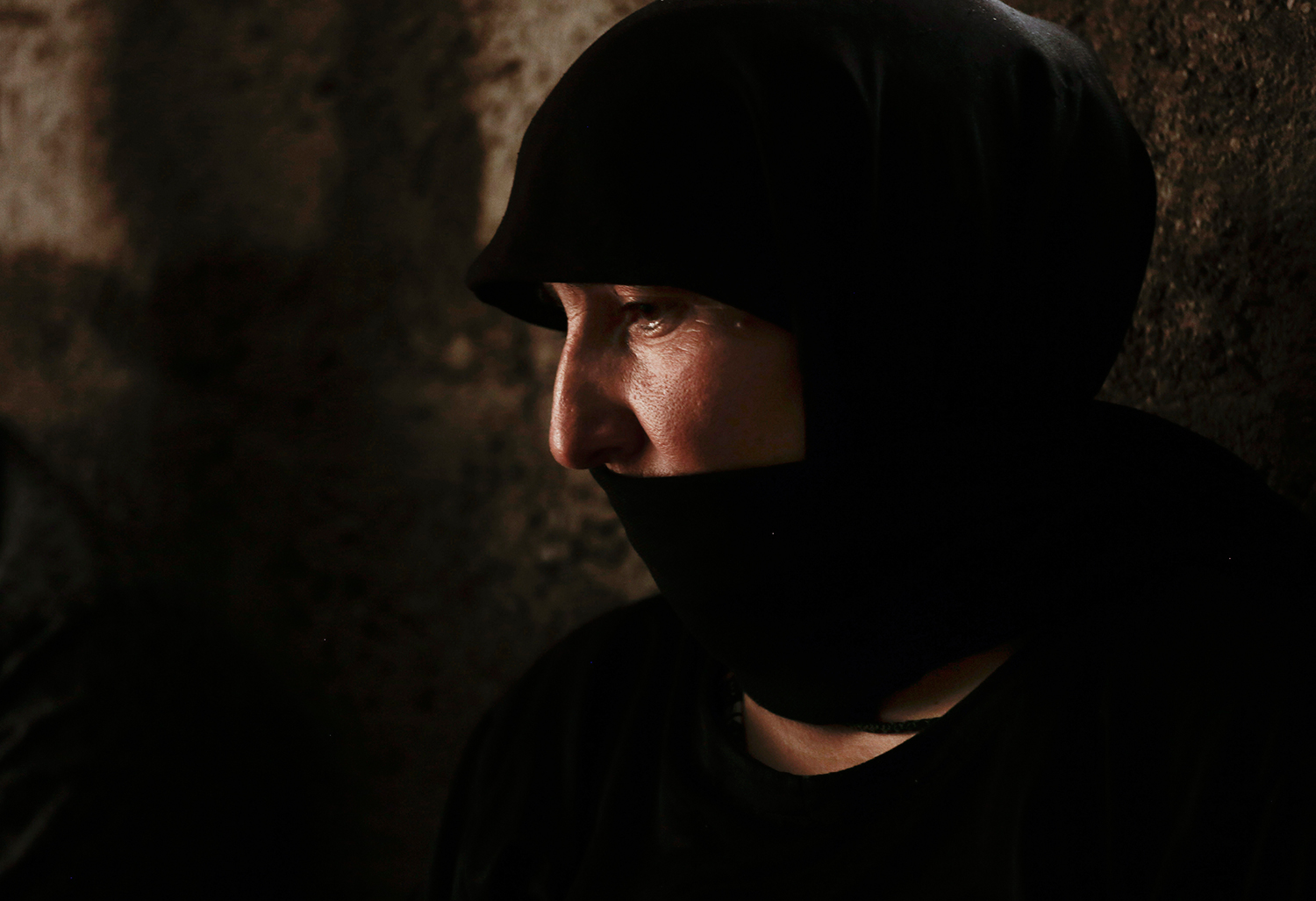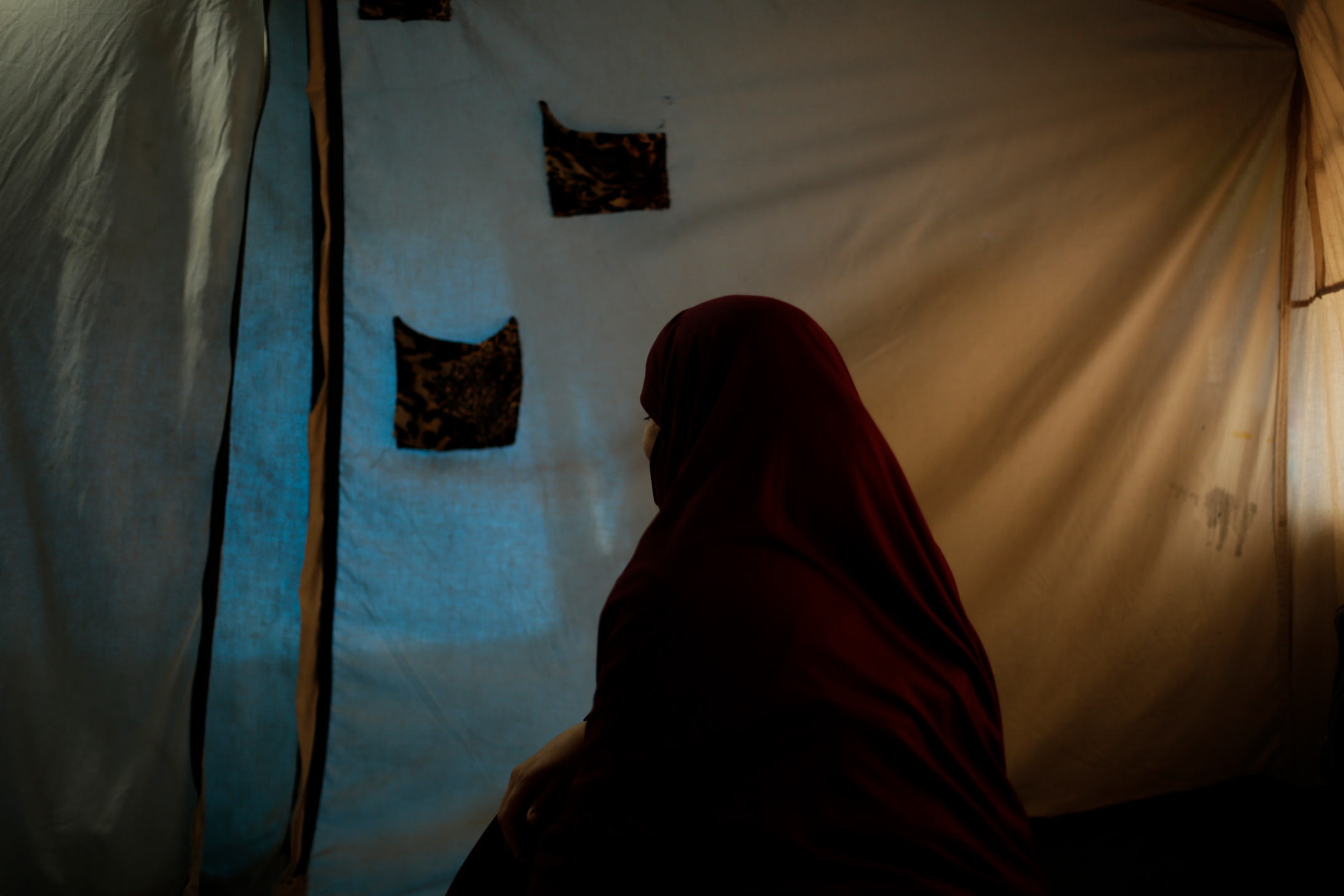Oldest Christian monastery in Iraq is razed

The oldest Christian monastery in Iraq has been reduced to a field of rubble, yet another victim of the Islamic State group's relentless destruction of ancient cultural sites. For 1,400 years the compound survived assaults by nature and man, standing as a place of worship recently for U.S. troops. In earlier centuries, generations of monks tucked candles in the niches and prayed in the cool chapel. The Greek letters chi and rho, representing the first two letters of Christ's name, were carved near the entrance.
Now satellite photos obtained exclusively by The Associated Press confirm the worst fears of church authorities and preservationists — St. Elijah's Monastery of Mosul has been completely wiped out.
In his office in exile in Irbil, Iraq, the Rev. Paul Thabit Habib, 39, stared quietly at before- and after-images of the monastery that once perched on a hillside above his hometown of Mosul. Shaken, he flipped back to his own photos for comparison.
"I can't describe my sadness," he said in Arabic. "Our Christian history in Mosul is being barbarically leveled. We see it as an attempt to expel us from Iraq, eliminating and finishing our existence in this land."
The Islamic State group, which broke from al-Qaida and now controls large parts of Iraq and Syria, has killed thousands of civilians and forced out hundreds of thousands of Christians, threatening a religion that has endured in the region for 2,000 years. Along the way, its fighters have destroyed buildings and ruined historical and culturally significant structures they consider contrary to their interpretation of Islam.
Those who knew the monastery wondered about its fate after the extremists swept through in June 2014 and largely cut communications to the area.
Now, St. Elijah's has joined a growing list of more than 100 demolished religious and historic sites, including mosques, tombs, shrines and churches in Syria and Iraq. The extremists have defaced or ruined ancient monuments in Nineveh, Palmyra and Hatra. Museums and libraries have been looted, books burned, artwork crushed — or trafficked.
"A big part of tangible history has been destroyed," said Rev. Manuel Yousif Boji. A Chaldean Catholic pastor in Southfield, Michigan, he remembers attending Mass at St. Elijah's almost 60 years ago while a seminarian in Mosul.
"These persecutions have happened to our church more than once, but we believe in the power of truth, the power of God," said Boji. He is part of the Detroit area's Chaldean community, which became the largest outside Iraq after the sectarian bloodshed that followed the U.S. invasion in 2003. Iraq's Christian population has dropped from 1.3 million then to 300,000 now, church authorities say.
At the Vatican, spokesman Rev. Federico Lombardi, noted that since the monastery dates back to the time Christians were united, before the break with Orthodox and Catholics, the place would be a special one for many. He said it was the first news he had had of the destruction.
"Unfortunately, there is this systemic destruction of precious sites, not only cultural, but also religious and spiritual. It's very sad and dramatic," Lombardi told the AP.
The destruction of the monastery is a blow for U.S. troops and advisers who served in Iraq and had tried to protect and honor the site, a hopeful endeavor in a violent place and time.
Suzanne Bott, who spent more than two years restoring St. Elijah's Monastery as a U.S. State Department cultural adviser in Iraq, teared up when the AP showed her the images.
"Oh no way. It's just razed completely," said Bott. "What we lose is a very tangible reminder of the roots of a religion."
Army reserve Col. Mary Prophit remembered a sunrise service in St. Elijah where, as a Catholic lay minister, she served communion.
See these photos on APImages.com
"I let that moment sink in, the candlelight, the first rays of sunshine. We were worshipping in a place where people had been worshipping God for 1,400 years," said Prophit, who was deployed there in 2004 and again in 2009.
"I would imagine that many people are feeling like, 'What were the last 10 years for if these guys can go in and destroy everything?'" said Prophit, a library manager in Glenoma, Washington.
This month, at the request of AP, satellite imagery firm DigitalGlobe tasked a high resolution camera passing over the site to grab photos, and then pulled earlier images of the same spot from their archive of pictures taken globally every day. Imagery analyst Stephen Wood, CEO of Allsource Analysis, reviewed the pictures for AP and identified the date of destruction between Aug. 27 and Sept. 28, 2014. Before it was razed, images show a partially restored, 27,000-square-foot religious building. Although the roof was largely missing, it had 26 distinctive rooms including a sanctuary and chapel. One month later, "the stone walls have been literally pulverized," said Wood.
"Bulldozers, heavy equipment, sledgehammers, possibly explosives turned those stone walls into this field of gray-white dust. They destroyed it completely," he said. "There's nothing to rebuild."
The monastery, called Dair Mar Elia, is named for the Assyrian Christian monk — St. Elijah — who built it between 582 and 590 A.C. It was a holy site for Iraqi Christians for centuries, part of the Mideast's Chaldean Catholic community.
In 1743, tragedy struck when as many as 150 monks who refused to convert to Islam were massacred under orders of a Persian general, and the monastery was damaged. For the next two centuries it remained a place of pilgrimage, even after it was incorporated into an Iraqi military training base and later a U.S. base.
Then in 2003 St. Elijah's shuddered again — this time a wall was smashed by a tank turret blown off in battle. Iraqi troops had already moved in, dumping garbage in the ancient cistern. The U.S. Army's 101st Airborne Division took control, with troops painting over ancient murals and scrawling their division's "Screaming Eagle," along with "Chad wuz here" and "I love Debbie," on the walls.
A U.S. military chaplain, recognizing St. Elijah's significance, kicked the troops out and the Army's subsequent preservation initiative became a pet project for a series of chaplains who toured thousands of soldiers through the ruin.
"It was a sacred place. We literally bent down physically to enter, an acquiescence to the reality that there was something greater going on inside," remembered military chaplain Jeffrey Whorton. A Catholic priest who now works at Ft. Bragg, he had to collect himself after viewing the damage. "I don't know why this is affecting me so much," he said.
The U.S. military's efforts drew attention from international media outlets including the AP in 2008. Today those chronicles, from YouTube videos captured on the cell phones of visiting soldiers to AP's own high resolution, detailed photographs, take on new importance as archives of what was lost.
One piece published in Smithsonian Magazine was written by American journalist James Foley, six years before he was killed by Islamic State militants.
St. Elijah's was being saved, Foley wrote in 2008, "for future generations of Iraqis who will hopefully soon have the security to appreciate it."
Text from the AP news story, Only On AP: Oldest Christian monastery in Iraq is razed, by Martha Mendoza, Maya Alleruzzo and Bram Janssen.
Mendoza reported from Santa Cruz, Calif. Alleruzzo reported from Cairo. Associated Press writer Frances D'Emilio contributed to this report from Rome.
Follow AP journalists on Twitter @mendozamartha; @mayaalleruzzo and @bramjanssen
Spotlight is the blog of AP Images, the world’s largest collection of historical and contemporary photos. AP Images provides instant access to AP’s iconic photos and adds new content every minute of every day from every corner of the world, making it an essential source of photos and graphics for professional image buyers and commercial customers. Whether your needs are for editorial, commercial, or personal use, AP Images has the content and the expert sales team to fulfill your image requirements. Visit apimages.com to learn more.
Written content on this site is not created by the editorial department of AP, unless otherwise noted.
AP Images on Twitter | AP Images on Facebook | AP Images on Instagram
Visual artist and Journalist


























